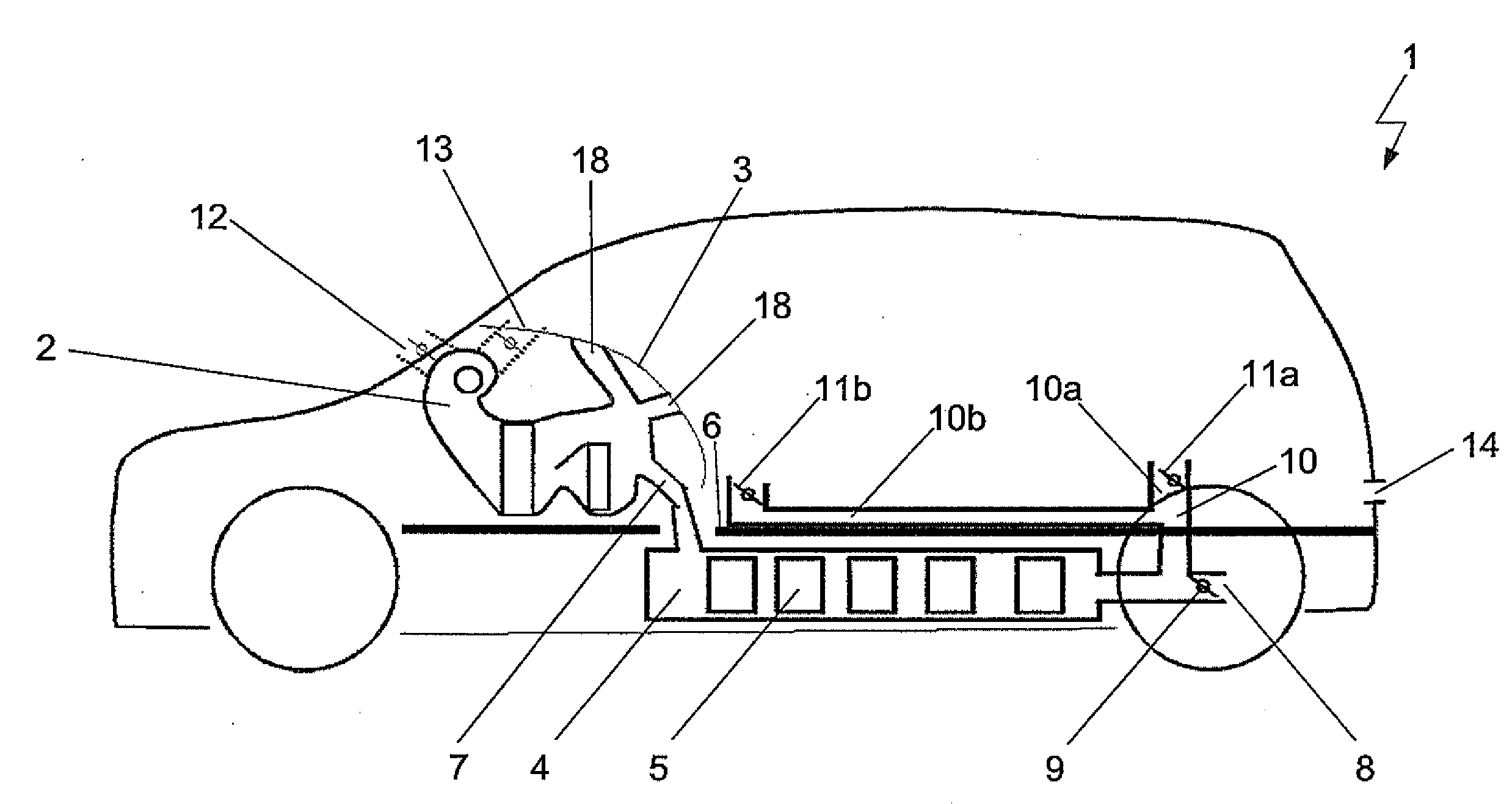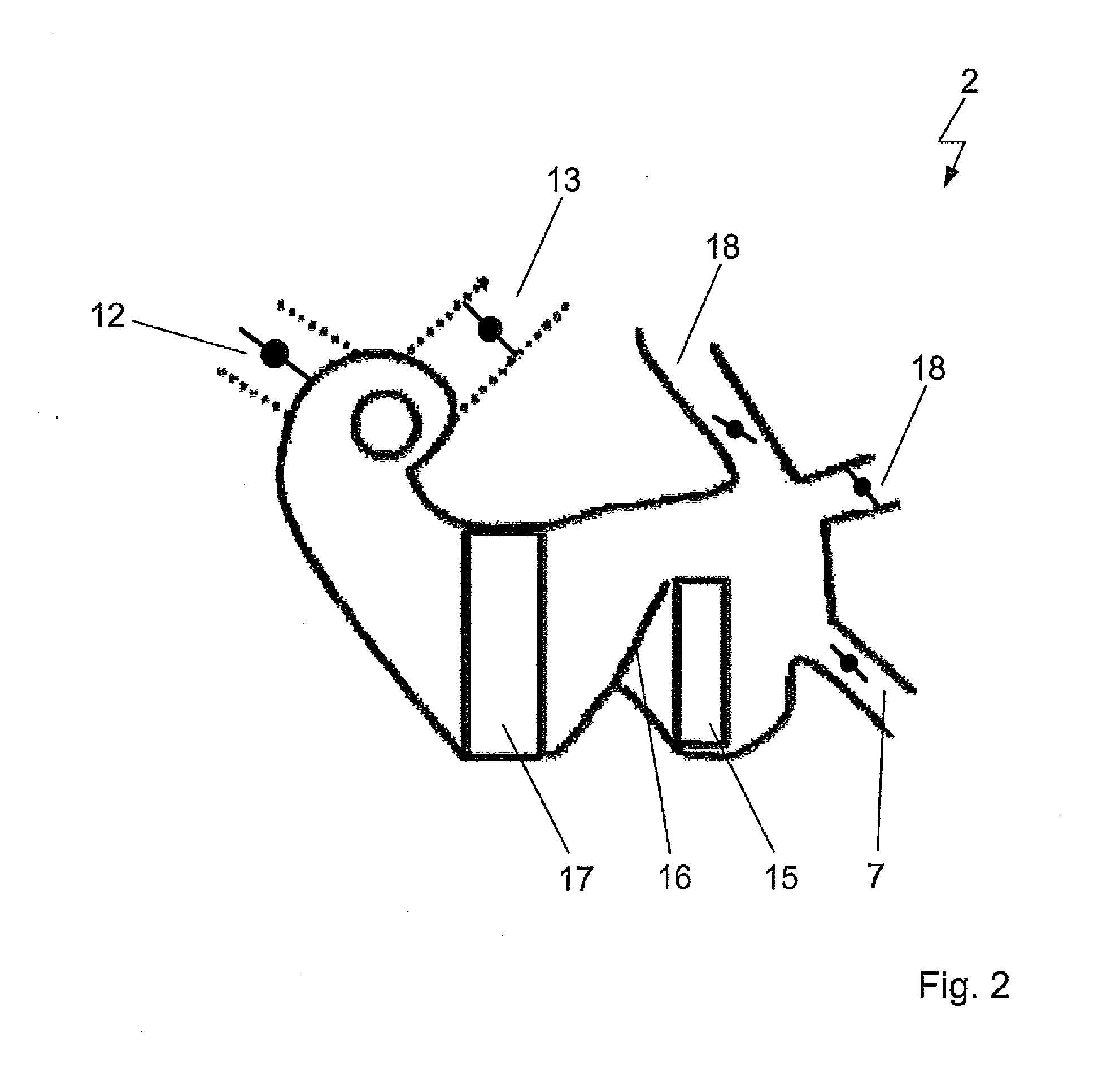HVAC system for vehicles with battery cooling
- Summary
- Abstract
- Description
- Claims
- Application Information
AI Technical Summary
Benefits of technology
Problems solved by technology
Method used
Image
Examples
Embodiment Construction
[0031]In FIG. 1 an HVAC system 1 for a vehicle with battery cooling and cooling air return for cabin heating is shown. The air conditioning device 2 is disposed in the cockpit 3, i.e. in the front region of the vehicle or the passenger compartment. In addition to cockpit outlets 18 in the front region, an ambient air channel 12, and a recirculating air channel 13, the air conditioning device 2 is provided with a battery cooling channel 7. So the HVAC system 1 is provided with a further outlet for battery cooling that turns into the battery cooling channel 7.
[0032]The battery, fastened beneath the cabin bottom 6, is established of several battery cells 5, with the battery cells 5 arranged integrated to a battery within the battery casing 4. Between the battery casing 4 and the battery cells 5 as well as the single battery cells 5 spaces are provided through which an air mass flow is passed. The air mass flow is conditioned dependent upon the desired temperature and operation of the b...
PUM
 Login to View More
Login to View More Abstract
Description
Claims
Application Information
 Login to View More
Login to View More - R&D
- Intellectual Property
- Life Sciences
- Materials
- Tech Scout
- Unparalleled Data Quality
- Higher Quality Content
- 60% Fewer Hallucinations
Browse by: Latest US Patents, China's latest patents, Technical Efficacy Thesaurus, Application Domain, Technology Topic, Popular Technical Reports.
© 2025 PatSnap. All rights reserved.Legal|Privacy policy|Modern Slavery Act Transparency Statement|Sitemap|About US| Contact US: help@patsnap.com



